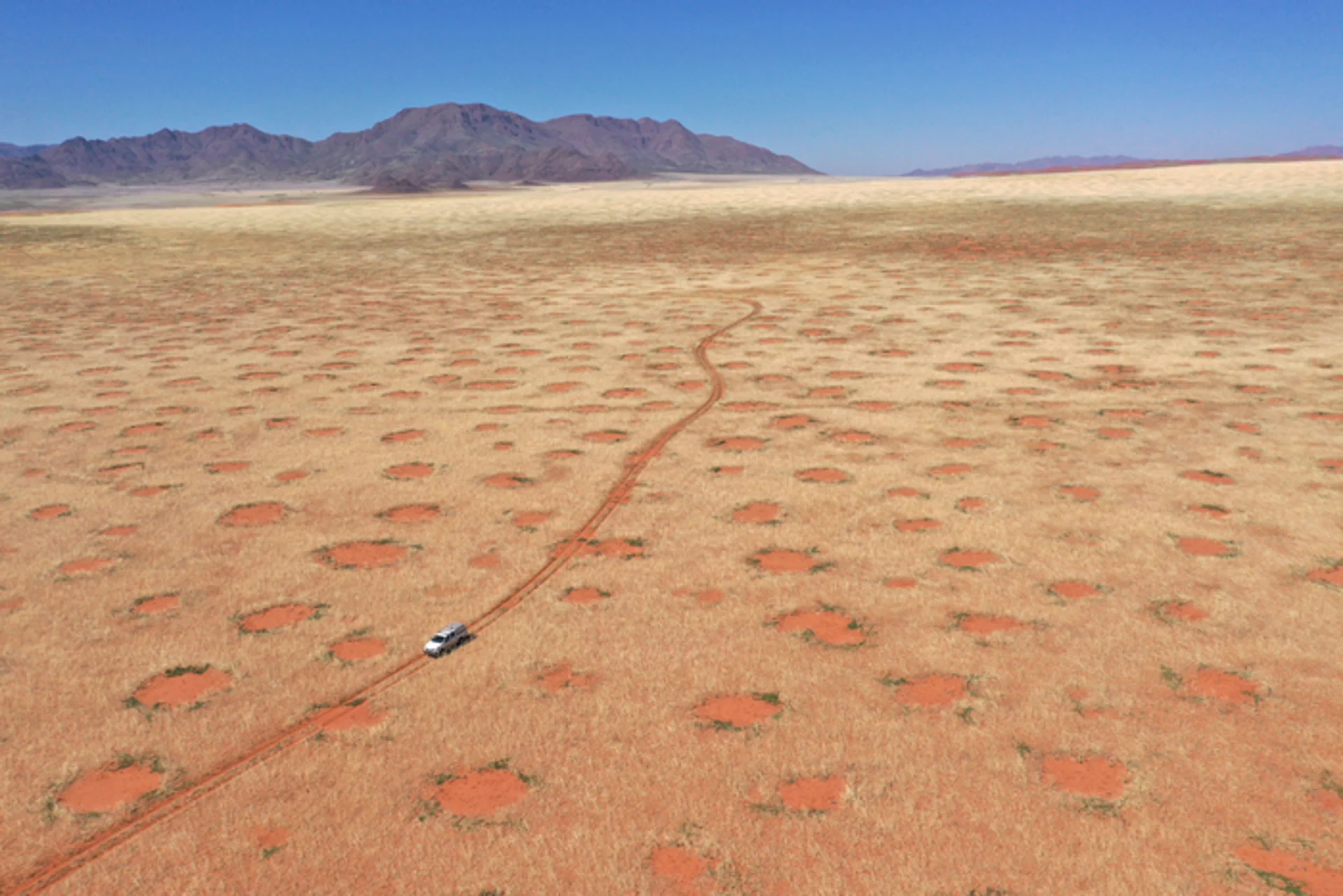
New theory demystifies Namibia's strange fairy circles
The findings could help researchers better understand how plants adapt to traditionally-dry climates.
Fairy circles are barren patches of land in parts of Africa and Australia - and they are a bit of a mystery.
It was thought they were created by termites eating the grass or that the plants somehow arranged themselves into the pattern.
Now researchers at the University of Göttingen have a new theory that was sparked by the weather.
The Namib desert, which is home to millions of fairy circles, typically sees about 300 days of sunshine and dry winds. In 2020, a lot of rain fell. Then, in January 2021, there was even more -- 228 millimeters to be exact. That's well above the long-term average of 85 millimeters.
It was enough to turn the land bright green - except inside the circles.

Drone image of car driving through the NamibRand Nature Reserve, one of the fairy-circle regions in Namibia where the researchers undertook grass excavations, soil-moisture and infiltration measurements (April 2022). Photo and caption: Dr Stephan Getzin.
SEE ALSO: UFO-shaped cloud spotted in the Greater Toronto Area
About ten days after the rain, the grass started to die within the circles. It was nearly all dead another ten days later, while the outside remained green.
They found no evidence of termite activity.
The new theory, published in the journal Perspectives in Plant Ecology, Evolution and Systematics last month, suggests fairy circles may be an adaptation to help grass withstand the heat.
In the warm weather of the Namib desert, the grass is constantly losing water through a process called transpiration, so they may create soil-moisture vacuums around their roots to draw water towards them.
“By forming strongly patterned landscapes of evenly spaced fairy circles, the grasses act as ecosystem engineers and benefit directly from the water resource provided by the vegetation gaps," lead author Dr. Stephan Getzin says in a statement.
"In fact, we know related self-organized vegetation structures from various other harsh drylands in the world, and in all those cases the plants have no other chance to survive except by growing exactly in such geometrical formations.”
This understanding could help researchers understand how plants adapt elsewhere in similar climates. It could also provide some insight into plant evolution in the face of climate change since self-organizing can help plants withstand prolonged dry spells.











